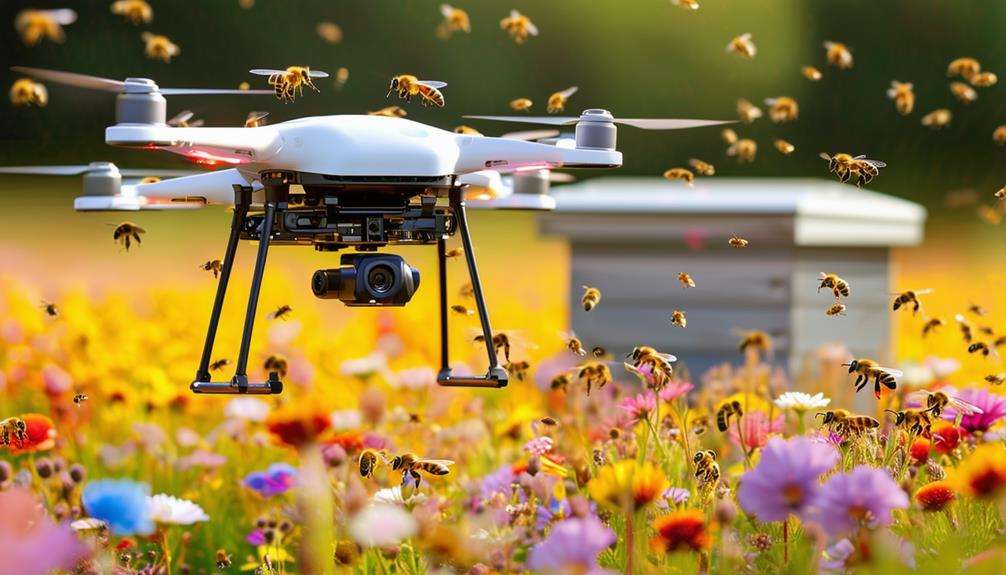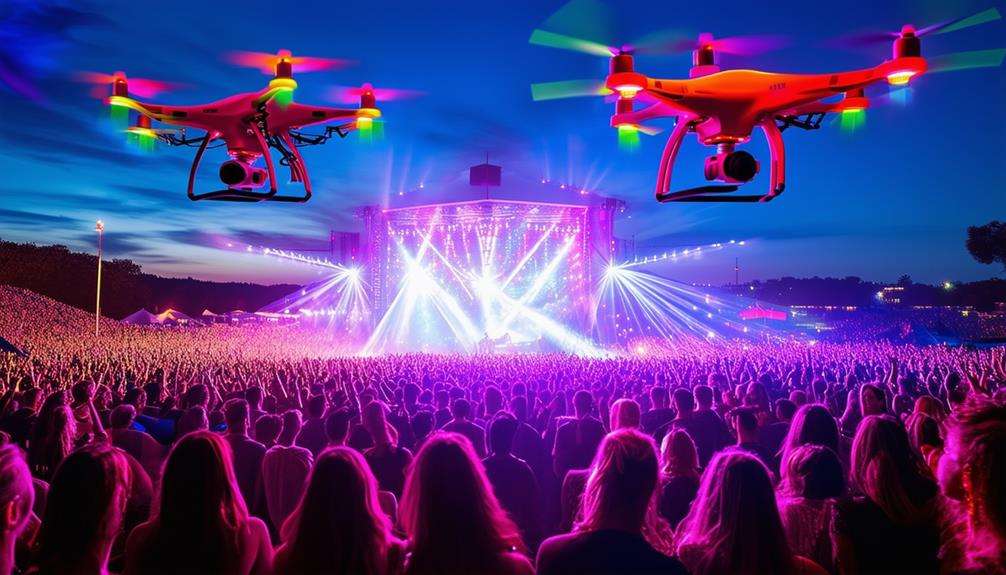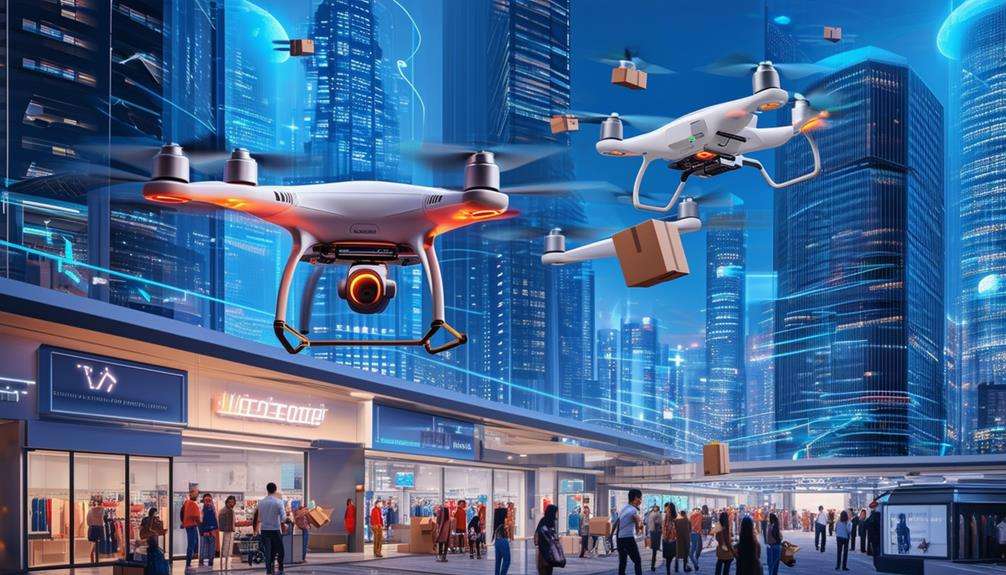How Far Can a UAV Drone Fly?
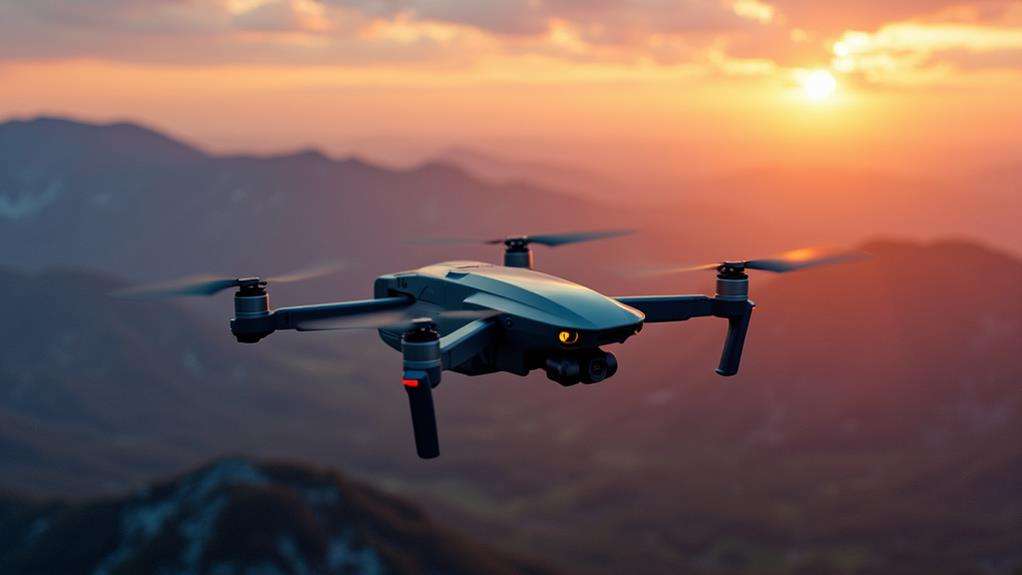
Determining how far a UAV drone can fly depends on various factors, including the type of drone, battery capacity, weight, and environmental conditions. Small tactical drones might achieve a range of up to 90 kilometers, while high-end consumer drones like the DJI Mavic Pro can exceed 9.7 kilometers. Additionally, legal regulations and signal loss are significant factors that can limit a drone's range. Understanding these constraints is essential for maximizing your drone's potential. Let's delve into these aspects further.
Factors Influencing Range
When evaluating the range of a UAV drone, several critical factors must be considered. Battery capacity stands out as a primary determinant; larger batteries can extend flight times but add weight, potentially limiting range. The drone's overall weight is another key factor, as lighter drones generally have longer ranges due to lower energy consumption.
Environmental conditions, such as wind speed and air density, also play a significant role. High winds can impede the drone's progress, requiring more power and reducing its range. Similarly, the propulsion system's efficiency, including the motors and propellers, affects the amount of thrust generated and the energy consumption rate.
Payload weight is crucial; additional equipment like cameras increases the drone's weight, leading to higher energy consumption and shorter flight times. Therefore, optimizing the payload is essential for maximizing range.
Aerodynamic design efficiency contributes as well. Drones with optimized aerodynamics face less air resistance, allowing for longer flights. By considering these factors—battery capacity, drone weight, environmental conditions, propulsion system efficiency, payload weight, and aerodynamic design—you can more accurately estimate a drone's flight time and operational range.
Legal Regulations
Understanding the factors influencing a drone's range is crucial, but it's equally important to consider the legal regulations governing drone operations. As a drone operator, you are generally required to keep your drone within Visual Line of Sight (VLOS), which FAA regulations limit to approximately 0.25 to 0.5 miles. This rule ensures that you maintain visual contact with your drone for safety. Many countries have similar VLOS requirements, underscoring the need for constant vigilance during drone flights.
For advanced commercial purposes, you might consider flying Beyond Visual Line of Sight (BVLOS). However, this requires special permissions and advanced navigational technologies to ensure safe operations. Additionally, you must be mindful of airspace restrictions, particularly near airports. In the U.S., FAA regulations impose a 5-mile radius rule around airports, requiring FAA authorization for operations within these restricted zones.
To help navigate these rules, the B4UFLY app is invaluable. It assists in checking airspace restrictions and staying updated on local regulations. Ignoring these guidelines can result in severe consequences, including hefty fines and legal actions.
- Ensure your drone stays within VLOS.
- Obtain permissions for BVLOS flights.
- Always check for airspace restrictions.
- Use tools like B4UFLY for local regulations.
- Respect flight capabilities and safety measures.
Drone Types and Ranges
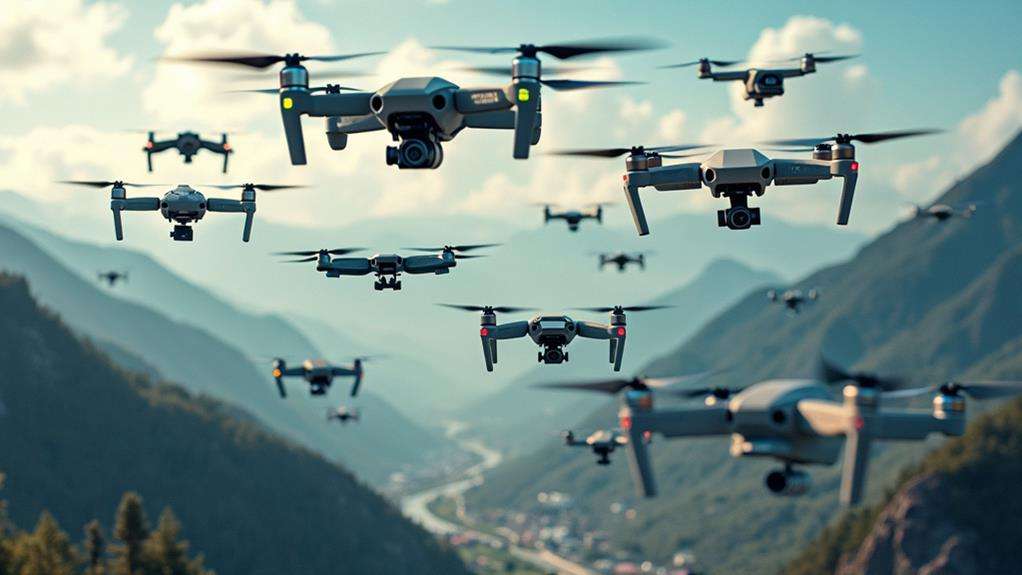
Understanding the different types of drones and their respective ranges can significantly enhance your operational planning and effectiveness. Drone types vary widely, from small tactical drones to robust military drones, each with distinct flight ranges and capabilities tailored to specific uses.
Small tactical drones, often employed in military operations, typically have a range of approximately 90 kilometers and can operate for up to 12 hours. These are ideal for reconnaissance missions. Multi-rotor commercial drones, commonly used by businesses, generally offer flight ranges between 10 to 15 kilometers. Fixed-wing commercial drones can extend up to 100 kilometers, making them suitable for longer surveillance or mapping tasks.
High-end consumer drones, such as the DJI Mavic Pro, can achieve flight distances exceeding 9.7 kilometers (approximately 6 miles), providing enthusiasts and hobbyists with substantial range. Police drones have impressive capabilities, capable of flying up to 200 kilometers, although they commonly operate within 15 kilometers for urban surveillance.
Signal Loss and Failsafe Features
Signal loss is a critical concern for drone operators, making failsafe features essential to ensure safe and reliable flights. When a drone loses its connection, the immediate response can determine whether it returns safely or crashes. Many advanced drones come equipped with failsafe features such as return-to-home (RTH) that automatically guide the drone back to the operator's location when it goes out of range.
Imagine the peace of mind you'll feel knowing your drone has these capabilities:
- Automatic return-to-home (RTH)
- Hover in place until signal is restored
- Controlled landing options
- Smart notifications on connected devices
- Enhanced safety during unexpected events
While low-cost models might simply fall from the sky during signal loss, mid-range and advanced drones offer a range of solutions. For instance, some drones can hover in place, giving you a chance to regain control without losing the drone. Others are programmed to perform a controlled landing, minimizing damage. Connected devices, like smartphones, provide smart notifications, alerting you promptly when your drone is out of range. These features ensure that even during unexpected signal loss, your drone can safely return to your control or location.
Enhancing Flight Range
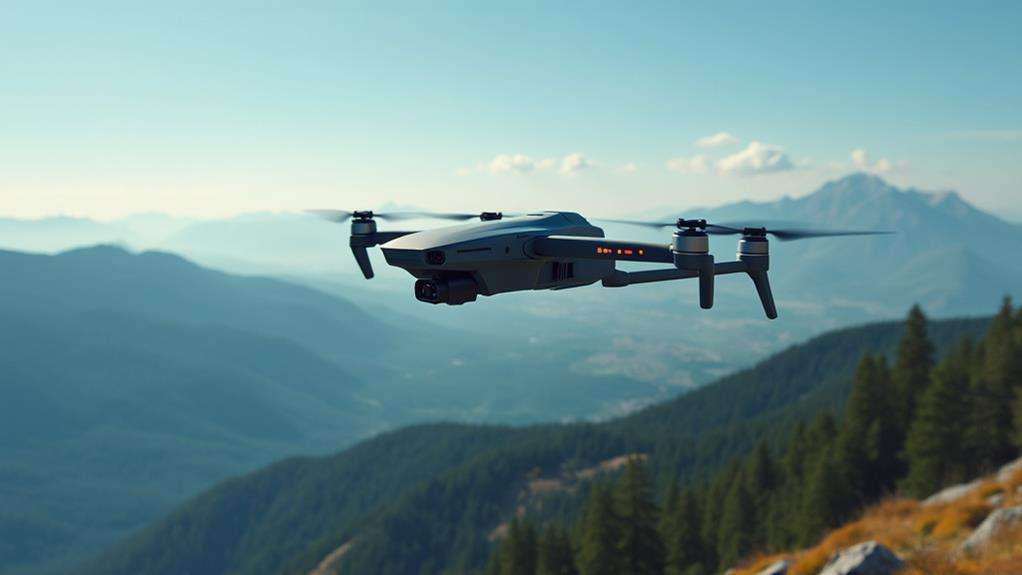
Maximizing your drone's flight range can significantly enhance your aerial adventures and operational capabilities. To achieve this, focus on several key areas.
Upgrading to high-capacity batteries is crucial. These batteries can extend flight duration and range, reducing the need for frequent recharging. Weight reduction is another important factor. By removing unnecessary components or using lightweight materials, you can improve flight efficiency and allow your drone to travel farther.
| Enhancement Strategy | Benefit |
|---|---|
| High-capacity batteries | Increased flight duration |
| Weight reduction | Enhanced flight efficiency |
| Efficient motors | Improved energy conservation |
Using efficient motors and propellers can significantly improve energy conservation during flight, allowing your drone to cover more distance per battery charge. Additionally, flying in favorable weather conditions, such as with a tailwind, can optimize battery performance and extend your flight range.
Implementing signal boosters is also beneficial. These devices can enhance the communication range between your drone and its controller, ensuring reliable operation over greater distances. By focusing on these strategies, you can maximize your drone's flight range and make the most of your aerial endeavors.

